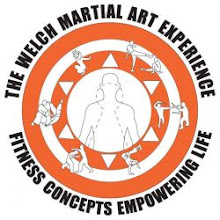Training and Looking for a Personal Trainer In Atlanta
With Full-Range Pulldowns
works WAY better for bringing out eye-popping detail in your back.
And if you've ever had a hard time feeling your back working, THIS
exercise will fix that in an instant!
For me, it's rare that I do pulldowns, hins or weighted chins hit the back for targeting growth much better. But when I DO perform pulldowns, THIS is one my very favorite versions of it.
Believe me, if you have a hard time feeling your back working when you train it, this is the cure...your lats will be BURNING by the end of the set...heck, after just a couple of reps!
This exercise is a combination of a pulldown movement and a rowing movement - the two BASIC planes of movement for the lats. The trick here is that you're going to go from one directly into the other without releasing the tension in your lats. It's VERY tough but VERY effective.
The good thing is, you don't need to be super-strong to perform this exercise - even a total beginner can do it. Just adjust the weight to what you're able to use.
Basically, all you need is a pulldown machine. I prefer a close, underhand grip but you can do wide-grip as well. Use a weight that's lighter than you think you'll need for this one - about 1/2 to 2/3 of what you'd normally use for pulldowns (trust me on this - don't be a hero).
- Start the movement like a normal pulldown.

- Pull the bar down to your upper chest.

- Now the CRITICAL part...holding the bar IN PLACE IN SPACE, lean a ll the way back. You'll now be in a vertical rowing position.

- Now row the bar all the way down as far as you can.

- You're hitting a peak contraction on the lats TWICE in this exercise. It's quite an experience!
- Now come back up, bringing your body up and the bar up at the same time. The way down is a two-part movement but the way up is all at once.
Now do it again!
Believe me, you will get a REAL burn in your lats by the end of the first set of this one. It's one of my favorites for carving definition into the back.
This exercise can be found in my book "The Best Exercises You've Never Heard Of" - one of 53 unique and powerful exercises that will kick your butt out of any training plateau!
------------------
By: Nick Nilsson is Vice-President of the online personal training company BetterU, Inc. He has a degree in Physical Education and Psychology and has been inventing new training techniques for more than 17 years. Nick is the author of a number of bodybuilding eBooks including "Muscle Explosion! 28 Days To Maximum Mass", "Metabolic Surge - Rapid Fat Loss," "The Best Exercises You've Never Heard Of," "Gluteus to the Maximus - Build a Bigger Butt NOW!" and "The Best Abdominal Exercises. He can be contacted at betteru@fitstep.com.

















